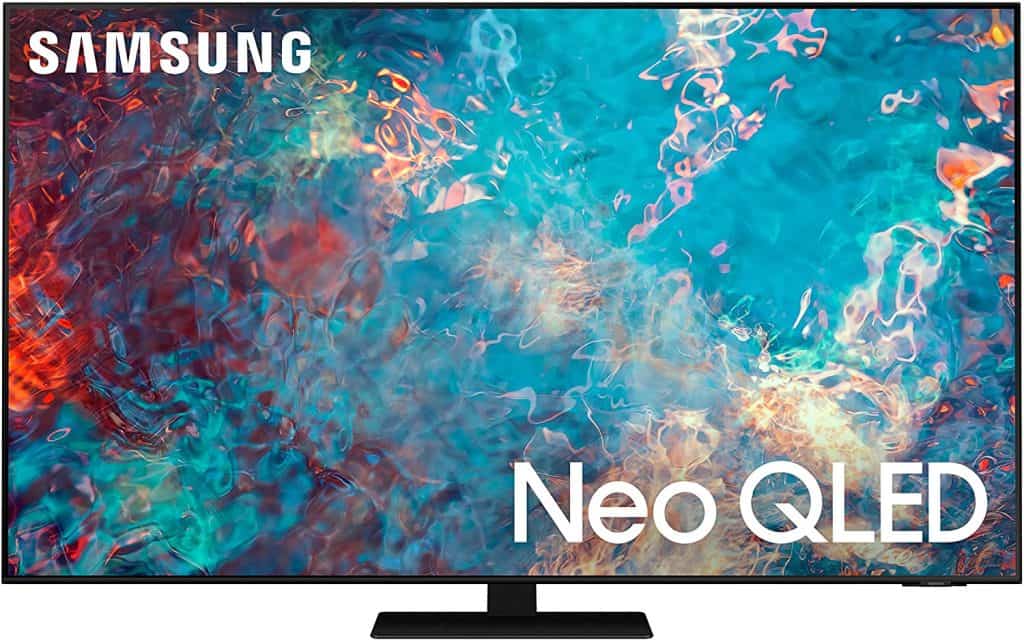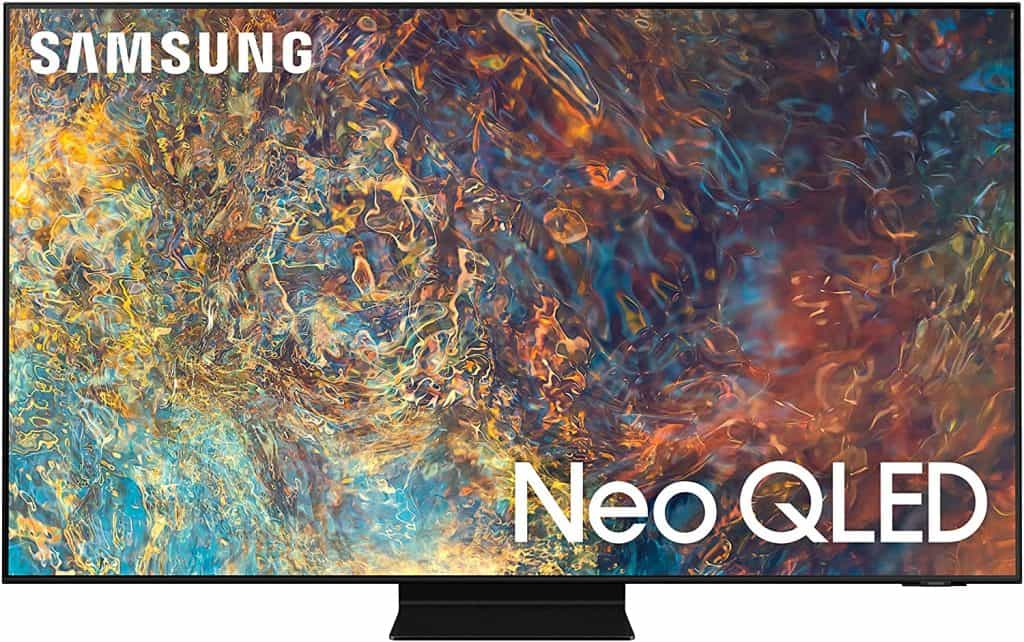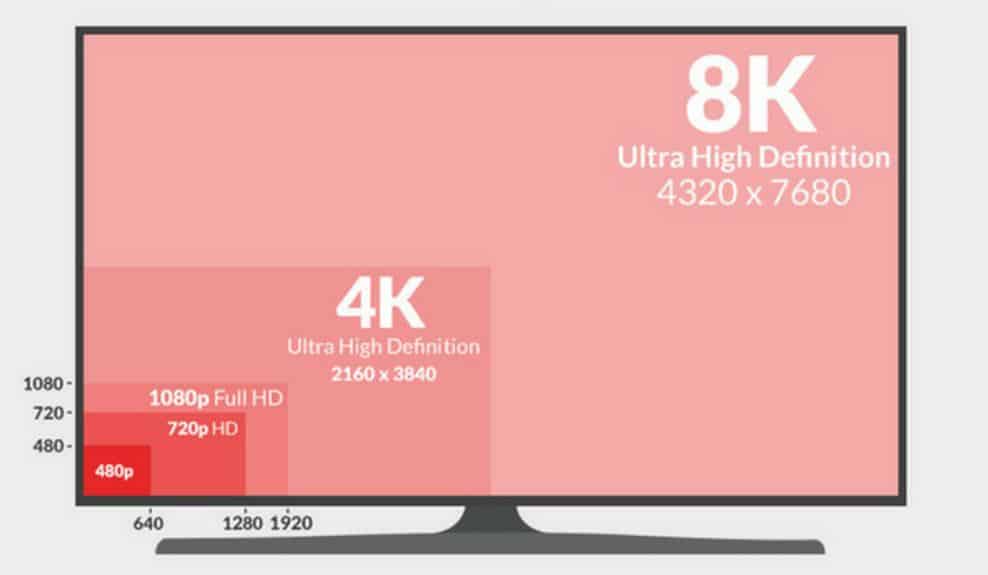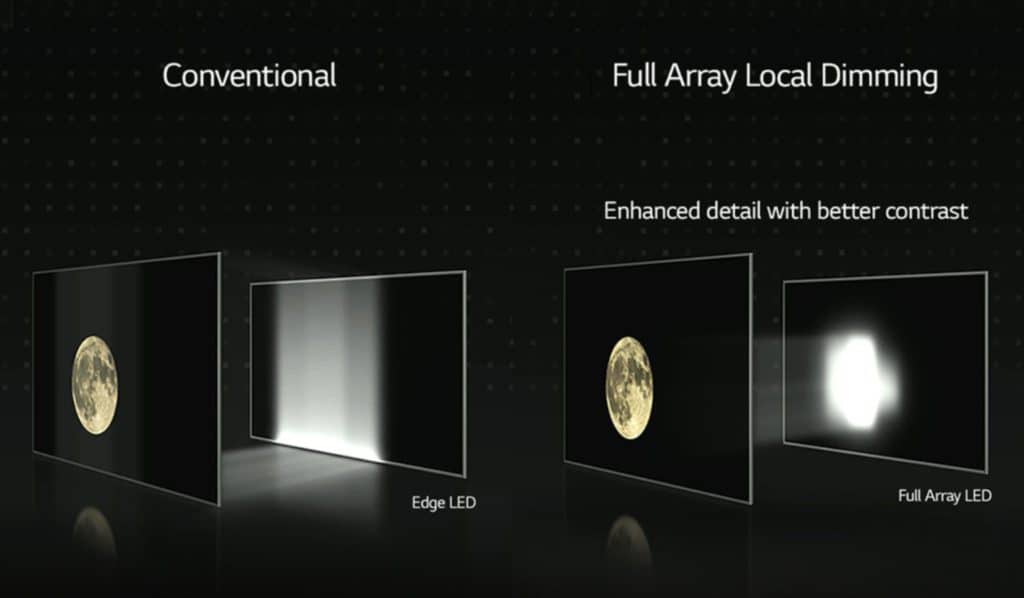When buying a new TV, it is important to narrow down your choices. If you have narrowed your choice to Samsung’s QN85A and QN90A, you have done the right thing! In this article, we compare the QN85A vs QN90A, which are two amazing Samsung TV models! Find out which one will prevail.
QN85A vs QN90A – Quick Comparison
At first glance, TV models in this QN85A vs QN90A comparison have almost the same components and features. They support 4K resolution and have the same processor and operating system. But, what is the difference? How do we determine which TV is more suitable for us? Find out the answers in the article!
| QN85A | QN90A | |
|---|---|---|
| Screen Sizes (inches) | 55, 65, 75, 85 | 43, 50, 55, 65, 75, 85, 98 |
| Screen Panel | IPS | VA |
| Processor | Neo Quantum Processor 4K | Neo Quantum Processor 4K |
| Operating System | Tizen 2021 | Tizen 2021 |
| Refresh Rate | 120 Hz | 120 Hz |
| Variable Refresh Rate | Yes | Yes |
| Resolution | 4K | 4K |
| Contrast Ratio | 1373: 1 | 3510: 1 |
| HDMI Ports | 4 (3x HDMI 2.0, 1x HDMI 2.1) | 4 (3x HDMI 2.0, 1x HDMI 2.1) |
| USB Ports | 2 (USB 2.0) | 2 (USB 2.0) |
| WiFi and Bluetooth | Yes | Yes |
| Speakers | 60 Watt | 60 Watt |
As you can see in the table above, the Samsung QN85A and QN90A share many similar features. But, these numbers and words do not tell us much. So, keep reading the article to find out the differences between these models.
Samsung QN85A

Pros:
- Wide viewing angles
- 120 Hz 4K panel
- Timeshift feature
- Real colors at different angles
Cons:
- Subpar sound performance
- Limited selection of screen sizes
Samsung QN90A

Pros:
- Contrast ratio with local dimming 26534: 1
- Vast range of screen sizes
- Exceptional reflection handling
- Good sound performance
Cons:
- Narrow viewing angles
- No USB 3.0 support
QN85A vs QN90A – Features Face to Face
Panel Technology
When looking for a new TV, you will notice labels such as IPS, VA, or TN. These labels refer to different screen types. The Samsung QN85A has an IPS panel, while the QN90A has a VA panel. So, what do these labels actually tell us?
The most significant advantages of IPS panels are wide viewing angles and accurate colors. So, if you want to have almost the same color quality at different angles, the Samsung QN85A might be a good choice. You may experience motion blur, but this is hardly noticeable on these screen types.
However, if you prefer high contrast and deep blacks more, the Samsung QN90A seems like a better choice. It is equipped with a VA panel. Therefore, the TV is ideal for people who like to watch movies in dark environments.
Winner: Draw
Image Processor
Introduced in 2021, the Neo Quantum processor is among the latest Samsung processors. The company claims that this processor has many advanced features. It uses a neural network, artificial intelligence, and machine learning techniques to optimize image quality.
The Neo Quantum processor comes with four Arm Cortex-A73 cores with a frequency of 1.8GHz. It also contains a graphics chip called the GPU Mali-G52 MC2. In other words, the processor is an excellent solution for image optimization.
The Samsung QN85A and QN90A are equipped with this processor. So, if you want a TV capable of converting your old videos to 4K resolution, you can choose either of these two.
Winner: Draw
Motion Technology
This segment is essential if you want a TV that handles fast motions successfully. As you can see in the table below, the Samsung QN85A and QN90A have almost the same motion performance. Both TV models have a 120 Hz refresh rate and VRR support.
| QN85A | QN90A | |
|---|---|---|
| Response Time | 10.5 ms | 8.9 ms |
| Refresh Rate | 120 Hz | 120 Hz |
| Variable Refresh rate | Yes | Yes |
So, if you are looking for a TV for your PS4 or PS4 Pro console, the QN90A might be a better choice because of its response time. The Samsung QN90A has a response rate of 8.9 ms, which is more than one millisecond ahead of the Samsung QN85A.
Winner: Samsung QN90A
Picture Quality
The most significant feature is resolution when determining picture quality. Usually, we use the resolution to determine if the TV image is sharp or clear enough. Resolution is also called screen resolution. In the picture below, you can see the most common screen resolutions.

The Samsung QN85A and QN90A support 4K resolution. This is the highest possible resolution on these TVs. But, that does not mean they cannot show 480p, 720p, or 1080p content. On the contrary, they can do it very well!
The table below shows outstanding performance when it comes to the correlation between the most common TV resolutions and refresh rates.
| Resolution | QN85A | QN90A |
|---|---|---|
| 4K/120Hz | Yes (native support) | Yes (native support) |
| 4K/60Hz/4:4:4 | Yes | Yes |
| 4K/60Hz | Yes | Yes |
| 1440p/120Hz | Yes (native support) | Yes (native support) |
| 1440p/60Hz | Yes (native support) | Yes (native support) |
| 1080p/120Hz | Yes (native support) | Yes (native support) |
| 1080p/60Hz/4:4:4 | Yes | Yes |
Contrast Ratio / Black Level
As we said earlier, VA panels dominate the other screen types when it comes to contrast ratio. That is exactly the case here. The Samsung QN90A and its VA panel deliver an outstanding contrast ratio of 3510: 1. So, if you want a TV with a high contrast ratio, this might be a good option for you.
The Samsung QN85A is equipped with an IPS panel and has a contrast ratio of 1373: 1. As a result, the black colors on this TV may look grayish. However, you can increase the contrast ratio using certain modes, such as the Game Mode. Another alternative is to purchase the 85-inch version of this TV, which is equipped with a VA panel.
Winner: Samsung QN90A
Local Dimming
Both of these TVs have a full-array local dimming feature. It allows a TV to adjust backlighting to create deeper blacks. Look at the picture below to find the difference between the conventional and full-array local dimming features.

When the local dimming feature is on, the Samsung QN90A delivers deep blacks in dark environments. If you are sensitive to blooming, you may notice it around bright objects and subtitles. Overall, the local dimming feature provides a pleasant viewing experience.
It is worth mentioning that QN90A’s contrast ratio with the local dimming feature is impressive 26534: 1! So, if you like to watch movies, the Samsung QN90A might be the best TV for you.
Despite a decent local dimming feature, the Samsung QN85A has noticeable blooming around objects and subtitles. However, both of these TVs have the same local dimming performance in gaming.
Winner: Samsung QN90A
Peak Brightness
These two Samsung models excel in peak brightness since they fall into the category of TVs with a maximum brightness of over 1000 Nits. This means they have exceptional SDR and HDR brightness.
The QN85A has a maximum brightness of 1250 Nits. However, the QN90A is far better with a maximum brightness of 1860 Nits.
Winner: Samsung QN90A
Color
The color gamut and color volume on the QN85A model is good. But, it struggles with darker shades of colors because it has a lower contrast ratio. On the contrary, the QN90A has a great contrast ratio. It has a great color volume and wide color gamut.
They are rather similar in gradient handling. There are some bands on both models, but the QN90A model is slightly better in this segment. Overall, the Samsung QN90A model has more accurate and vivid colors.
Winner: Samsung QN90A
Viewing Angle
As expected, the Samsung QN85A has better viewing angles because of its IPS panel. There are some color changes at angles between 40 and 50 degrees. Black level rise is noticeable at 70 degrees on both TVs.
Even though the Samsung QN90A has a VA panel, it has decent viewing angles. The image may look darker above 30 degrees off-center. Still, this TV is a good choice for wide seating arrangements.
Winner: Samsung QN85A
Reflections / Anti-glare
If you have a room with large windows, it is recommended to get a TV with good reflection handling and high peak brightness. Otherwise, you will not see the image correctly, reducing your viewing experience.
Both TV models in this QN85A vs QN90A comparison have exceptional reflection handling. Since the Samsung QN90A has a slightly higher peak brightness, it could be more suitable for brighter rooms.
Winner: Samsung QN90A
Sound Quality
Both TV models have a digital room correction feature. In other words, a TV adjusts the sound according to your room’s acoustics.
However, this feature doesn’t help the Samsung QN85A deliver decent sound. Although the mid-range sounds are acceptable, the bass is very bad. Also, there is a distortion at higher listening levels depending on the content.
However, the Samsung QN90A is the apparent winner in this segment because of its well-balanced sound. Its bass is pretty decent, and the distortion performance is good.
Winner: Samsung QN90A
Smart TV Platform (Operating System)
As you can see in the table below, the Samsung QN85A and QN90A are the same when it comes to OS features. Both TV models support the latest version of the Tizen operating system. The system is easy to use and has the same performance on both TVs.
| OS Features | QN85A | QN90A |
|---|---|---|
| OS Version | Tizen 2021 | Tizen 2021 |
| Ease of Use | Easy | Easy |
| Smoothness | Very Smooth | Very Smooth |
| Time to Load YouTube | 2 s | 2 s |
| USB Playback | Yes | Yes |
| USB Recording PVR | Yes | Yes |
| Timeshift | Yes | Yes |
It is worth mentioning that these TVs have a twin tuner. In other words, you have the option to record TV content via the Tizen operating system. Additionally, you can connect an external drive and use all benefits of the timeshift feature.
Winner: Draw
Connectivity
Inputs
The inputs on these two models are the same. Neither model has a USB 3.0 input or a 3.5 mm headphone jack. However, they have two USB 2.0 ports and an ethernet jack. They also have four HDMI ports, out of which three support HDMI 2.0 and one supports HDMI 2.1.
Winner: Draw
Voice Assistants
Like many Samsung TVs, these two also support three voice assistants, Samsung Bixby, Amazon Alexa, and Google Assistant. This way, you can choose the assistant you like the most and use voice control.
You can use each of these voice assistants via a built-in mic on the SolarCell Remote, which comes with both models.
Winner: Draw
Wireless technologies
Both of these TVs support WiFi connectivity, 2.4 GHz and 5 GHz. Also, you can count on Bluetooth connectivity to connect your wireless devices.
Winner: Draw
Conclusion
It is time to conclude this QN85A and QN90A comparison and point out the most significant facts from the article.
Get the Samsung QN85A if you:
- Want a TV suitable for wide sitting arrangements
- Prefer to watch 4K or Full HD movies
- Would like to connect external devices to the TV
- Want to record TV content on external drives
- Like accurate color at different angles
Get the Samsung QN90A if you:
- Prefer to play the latest video games
- Want to watch movies in dark environments
- Want to place the TV anywhere in your room without worrying about reflections
- Want a decent sound performance